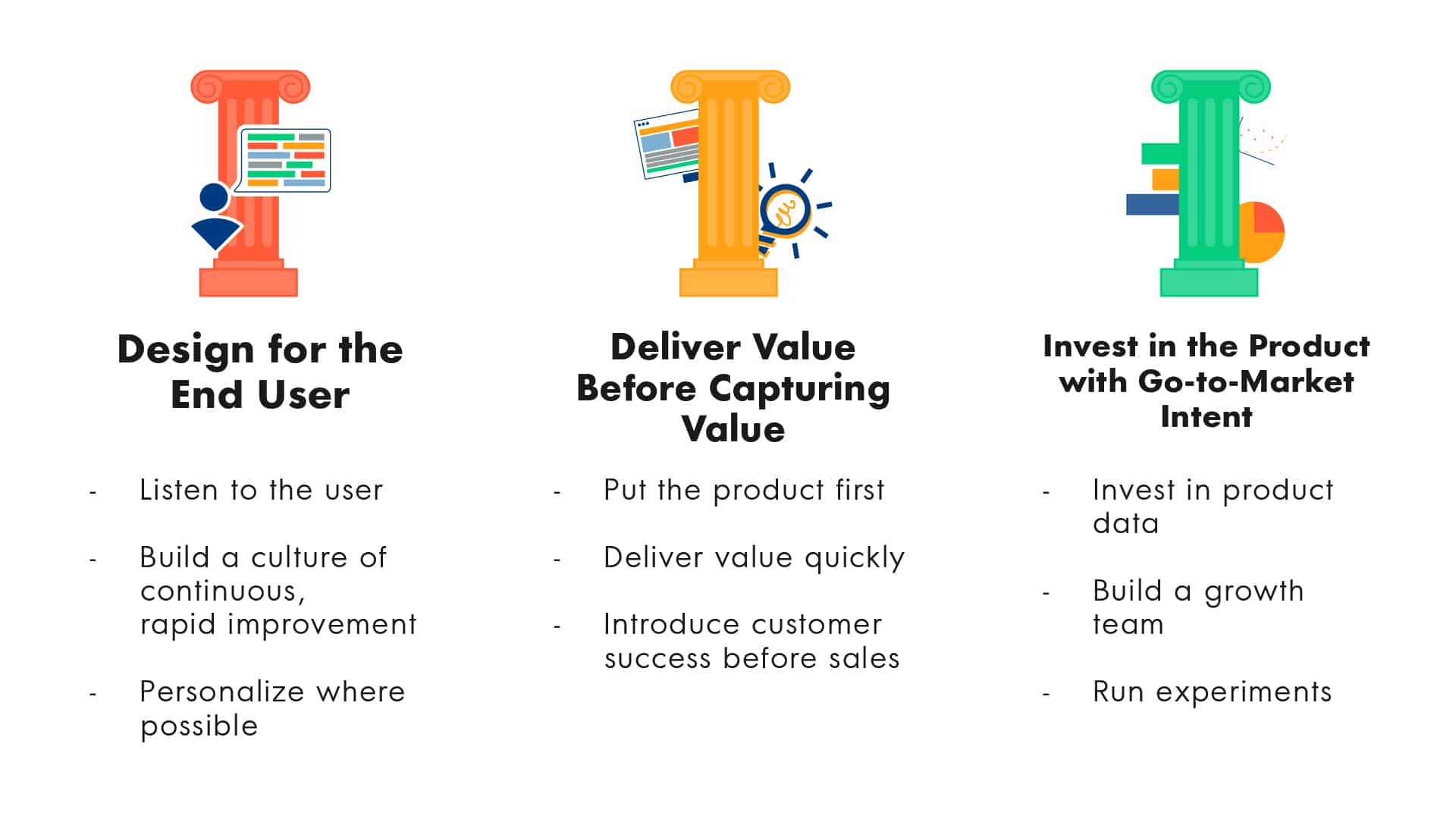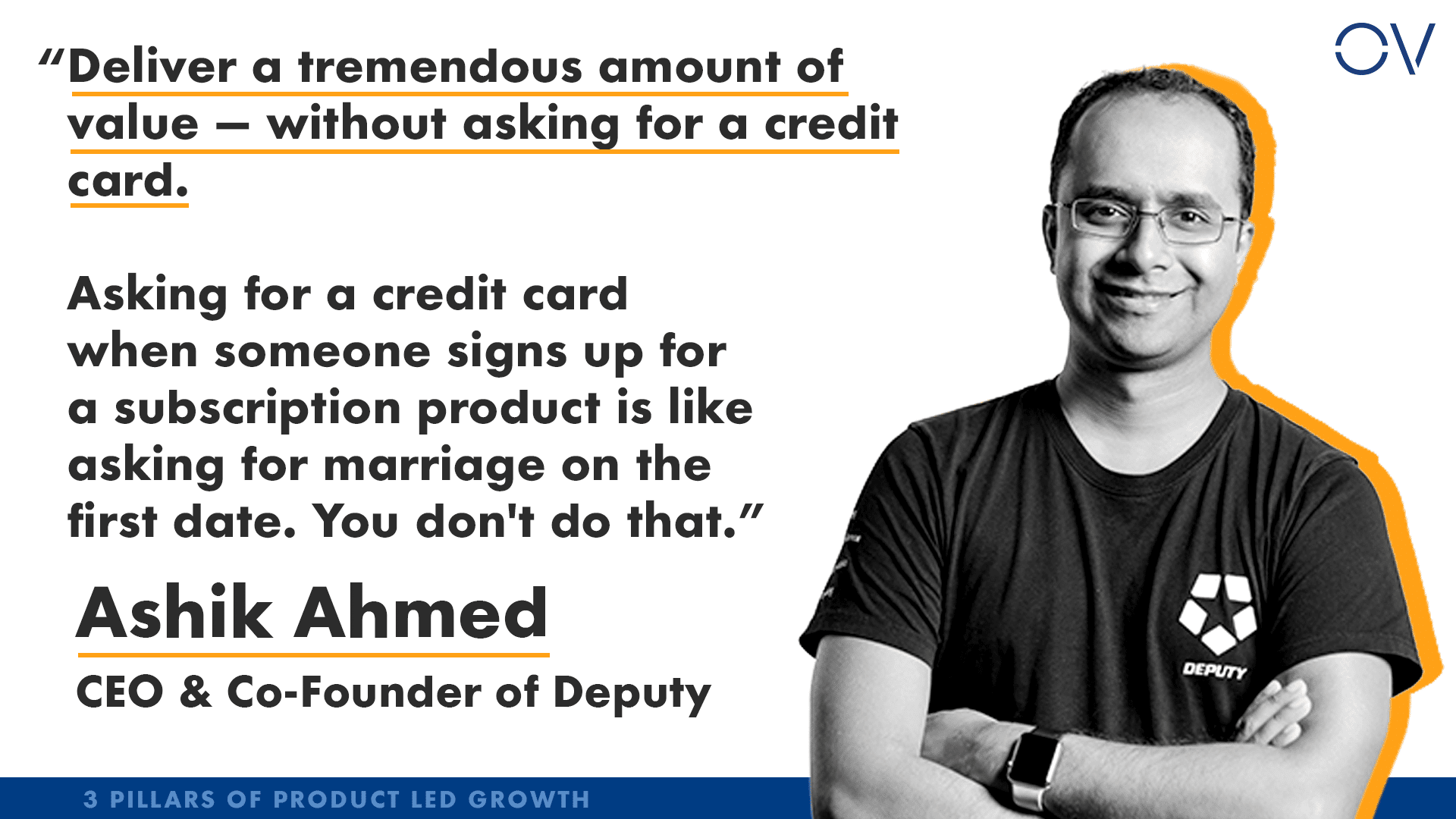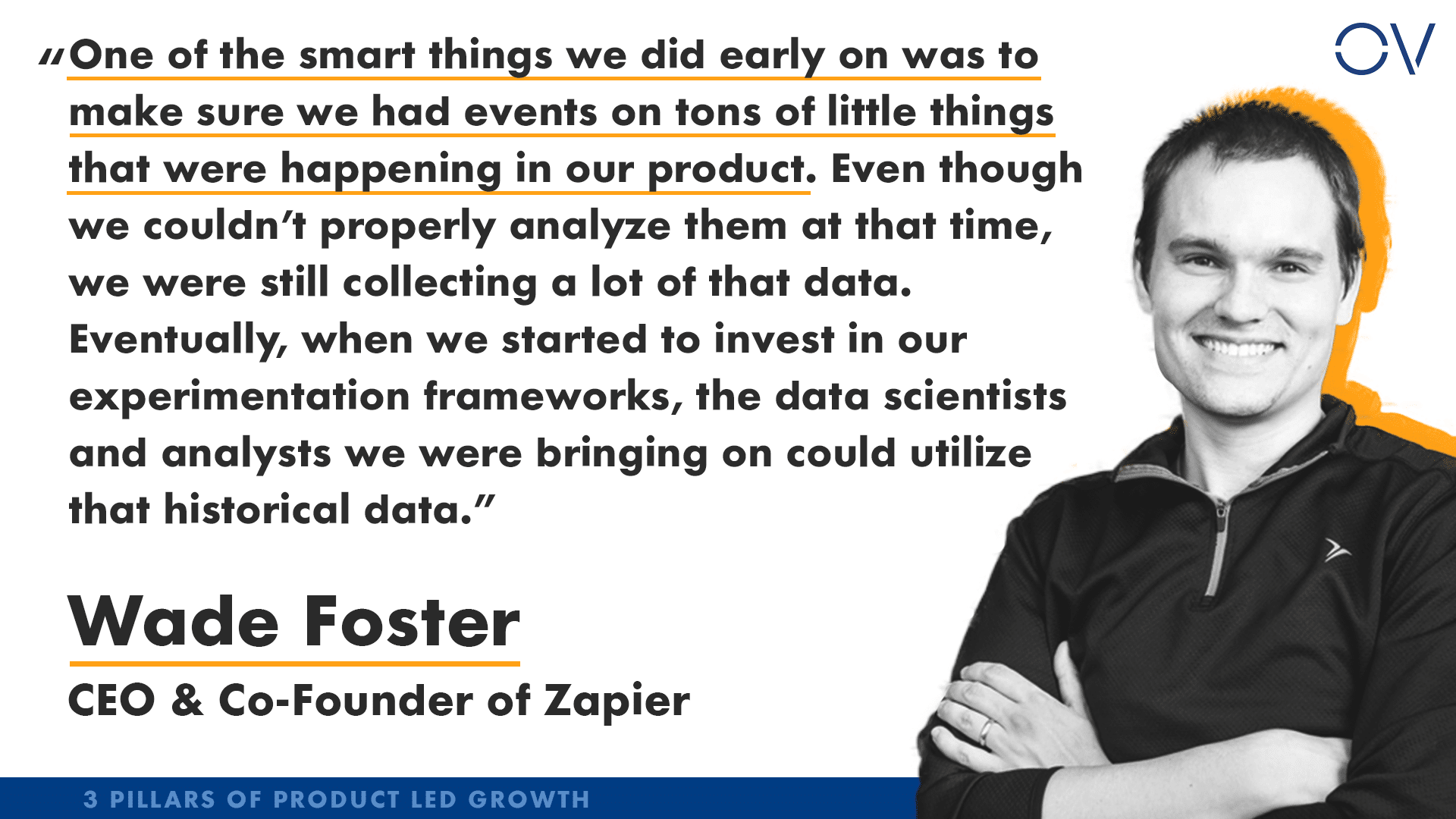The 3 Pillars of Product-Led Businesses
Datadog is a shining example of how product-led adoption scales to the enterprise and how publicPLG companies outperform their peers.
What is Product-Led Growth?
Qualities of Successful Product-Led Businesses ATTACH
These are the three pillars of product-led growth.

Pillar 1: Design for the End User
End users are now the most important constituents in buying software.
Tips and Ideas on Designing for the End User
At Postman, the collaboration platform for API development, CEO and Co-founder Abhinav Asthana built a “user-driven feedback loop where [they] would observe what’s going on, what things people are doing in the product, bake that back into additional capabilities, and then repeat.”
A great example of this is how Alec McCaw, Founder and CEO of Clearbit, describes their signup process: “The process begins before anyone even clicks ‘sign up.’ We de-anonymize IP addresses and figure out which company you work for, and then we customize the homepage to show customer stories that are specific to your company. We then auto-fill the signup form with as much information as we can. If we can answer a question for you, that’s one less thing for you to fill in. Once you’re signed up, the entire dashboard is customized based on your company information, the technology your company uses, your role and seniority. We send different emails for different roles. For example, engineers get an email with a code snippet in it. Marketers get an email with information about Marketo integration. And sales reps get a free Chrome extension that lets them use Clearbit instantly. It’s a completely customized experience that extends to all forms of communication, like ads. As soon as you sign up for Clearbit, we’ll put you in a cross-sell ad campaign to show you all the other products that we have to really make sure that you’re making the best use of our product base.”
Pillar 2: Deliver value before capturing value ATTACH

“The big advantage you have is distribution,” said Sid Sijbrandij, CEO and Co-founder of Gitlab, “People are familiar with open source licenses, and a lot of companies default to Open Source Software, which allows you to be a product-first company PLG.”
Increase Time-to-Value: Why Paywalls and Product-Led Businesses Don’t Mix
Ashik Ahmed, CEO and Co-founder of Deputy. “Asking for a credit card when someone signs up for a subscription product is like asking for marriage on the first date. You don’t do that.”
Focus on Value Creation Before Value Capture
At authentication platform Auth0, CEO and Co-founder Eugenio Pace modeled customer success from early on. “For every feature we shipped, there was documentation, a tutorial, an SDK and enablement,” Eugenio explained. “Because what good does it do to make a product that cannot be easily understood?”
If someone can’t easily understand how to derive value on their own or with the assistance of customer success, capturing that value will require substantially more effort.
Pillar 3: Invest in the product with go-to-market intent
PLG is a go-to-market strategy that relies on product usage as the primary driver of acquisition, conversion and expansion.
Product-Led Businesses Market Their Product from the Inside Out ATTACH

Invest in a Growth Team to Partner with Product Teams
product team is responsible for ensuring that the product creates value when users and customers interact with it, the growth team is responsible for ensuring the product enhances its own distribution, enablement and ability to capture value.